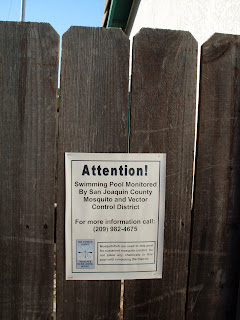Our piece of suburbia lies about 10 miles down the road from Stockton, California, the national epicenter of the housing meltdown a few years ago. We moved to Manteca about six years ago, when the market was at its peak, fortunate to have built enough equity in our starter home in Stockton to move to a larger house in a smaller town with a lower crime rate. It’s still a nice neighborhood, stucco and tile roofs; a few homes have swimming pools; the subdivision’s carefully planned park is within walking distance. My kids can walk to their neighborhood school. In a town filled with Bay Area commuters, my husband and I enjoy drives less than 10 minutes to the schools where we teach.
But every day we see evidence of the housing and economic crash --- empty homes with dead lawns, turned bright yellow in the summer heat; a changing parade of realtor signs in front yards; a sign on our the fence of our former next door neighbor warning that the water collecting in their drained swimming pool has been treated with mosquito-eating fish so not to add chemicals to it. Those neighbors, quiet people who we enjoyed a good relationship with, put their house up for a short sale with hopes for the best and left the state when he was next in line for layoffs and got an offer elsewhere. That was several months ago. The realtor sends an occasional yard worker by to mow the grass and cut back the biggest weeds from the front lawn. The formerly immaculate back yard is being rapidly overtaken by a variety of vegetation.
Some people’s misfortunes are opportunities for others, however. Across the street, a foreclosed home was purchased by a woman who got such a good deal on the home she was able to do extensive remodeling, repaint the outside, improve the landscaping and make it look like it probably did when it was brand new. A few doors down a young family moved in to a much larger home (another foreclosure) than they would have ever anticipated getting for their first home and immediately did the cosmetic improvements that their neighbors had long wished for.
You can walk down certain streets and everything looks like it did when we moved here and probably when the subdivision was originally built, about 10 years ago. Turn down another street and the abandoned/foreclosed/up for short sale homes punctuate the landscape. It’s a mix of those of us fortunate enough to be able to ride out the downturn so far and those who were swept away in the tidal wave of plummeting home values, predatory lending, and a recession. I like my neighborhood and all its comforts, but I am reminded daily of what many others have lost.
Ann B. Niendorf lives in Manteca, California, and is in her second career as a second grade teacher. Her first career was in journalism, writing for and editing for newspapers in Utah and California.




No comments:
Post a Comment